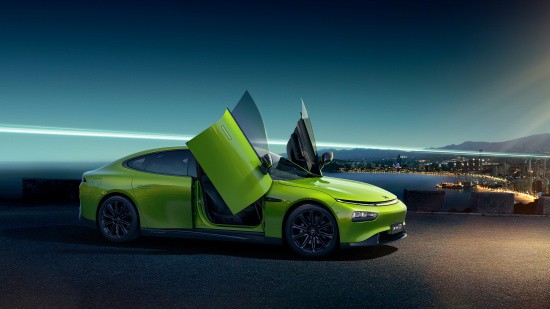Xpeng, a Guangzhou-based smart electric vehicle (EV) company, is working with Livox to deploy its automotive-grade lidar technology in Xpeng’s new production model in 2021.
Livox , Xpeng’s first partner in lidar technology, has customised its Horiz sensor for the EV maker, not only meeting automotive-grade requirements but also delivering cost efficiency and reliability for production models. The implementation of lidar in XPILOT architecture - Xpeng's autonomous driving system - will further enhance XPILOT’s safety as well as the ability to cover a comprehensive range of driving scenarios.
Lidar is laser-based radar used to help enable autonomous driving technology.
Xpeng’s new 2021 production model will be the world's first mass-produced smart EVs equipped with lidar. Livox is enhancing the detection range of its Horiz sensor to 150m (for objects at 10% reflectivity), enabling Xpeng’s XPILOT system to easily detect any remote obstacle while on highways and urban roads.
Livox’s customised solution for Xpeng also includes a new “ultra FPS” (Frames Per Second) lidar technology concept. Through a cleverly designed rotating-mirror technology, the objects within the lidar’s ROI (Region of Interest) will acquire a 20Hz point cloud data when the whole system is working at a frame rate of 10Hz. The new ROI point cloud density is hence increased to 144 lines equivalent at 0.1 second without the need for extra laser transmitters. The increased point cloud density enables the faster detection of tiny objects on the road surface, including pedestrians, bicycles or even traffic cones. The horizontal FOV of Horiz has also reached 120°. This greatly enhances the smart driving experience by resolving many persistent challenges faced by drivers, including the removal of blind spots against cut-in vehicles.
Since its founding in 2016, Livox has focused its R&D efforts on enabling cost-efficient mass production of lidar solutions, aiming to overcome the three bottlenecks in the lidar industry: price, scalability and reliability. Livox’s automotive-grade solution boasts a range of industry-leading standards in terms of detection range, FOV (Field of View) and point cloud density.
An eye on the emerging EV market
With offices in Beijing, Shanghai, Silicon Valley, and San Diego, Xpeng aims to drive smart EV transformation with technology and data, shaping the mobility experience of the future.
To optimise its customers’ mobility experience, Xpeng develops in-house its full-stack autonomous driving technology and in-car intelligent operating system, as well as core vehicle systems including powertrain and the electrification/electronic architecture.
Headquartered in Guangzhou, the company designs, develops, manufactures, and markets smart EVs that appeal to the large and growing base of technology-savvy middle-class consumers in China. Its manufacturing plants are located in Zhaoqing and Zhengzhou, located in Guangdong and Henan provinces, respectively.
Lidar enhances XPILOT’s perception capability
Xpeng has developed industry leading autonomous driving architecture with multiple modules for mass production vehicles: perception, behaviour planning, behaviour/motion prediction and map fusion. The implementation of lidar further enhances XPILOT’s perception capability.
The addition of lidar effectively improves the vehicle’s high-precision recognition performance, significantly enhancing the entire vehicle’s perception capabilities, particularly the accuracy and spatial resolution in the horizontal and vertical axes, enhancing the ability to avoid pedestrians and static obstacles. Coupled with lidar’s ability to monitor small obstacles regardless of ambient light levels, this can provide greater safety redundancy for ADAS functions.
Xpeng’s autonomous driving platform already integrates camera, millimeter-wave radar, ultrasonic and other sensors. The addition of lidar will not only provide a greater level of safety redundancy, by allowing more accurate imaging of the road situation, but will also enhance target detection, measurement accuracy, performance in low ambient light and other challenging perception conditions, and will significantly improve the overall performance of NGP (Navigation Guided Pilot), AEB (Autonomous Emergency Braking) and other functions.



